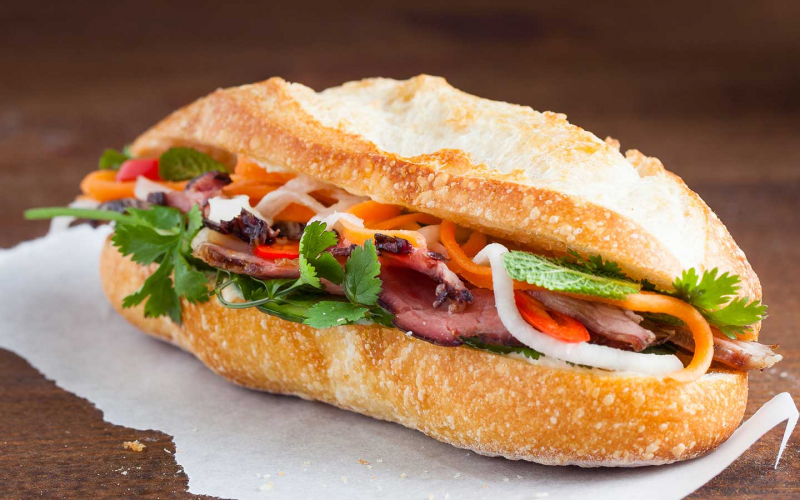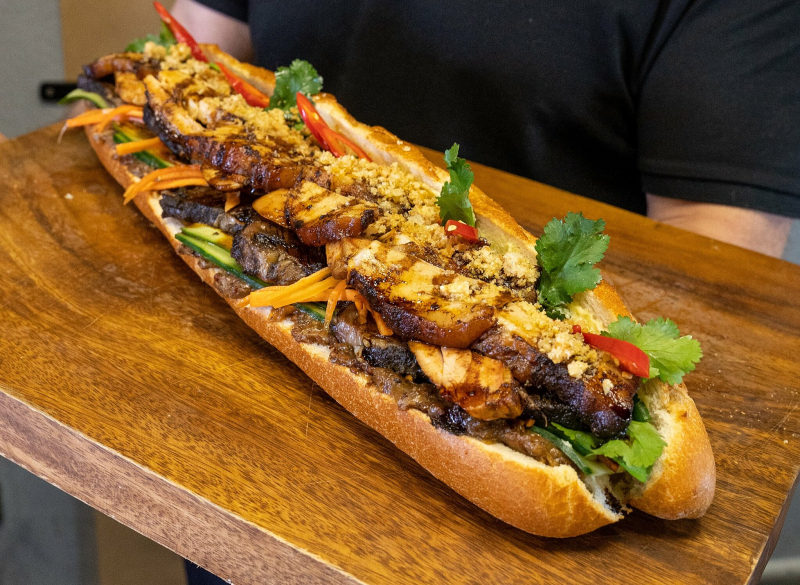“Bánh Mì” (Bread)
Vietnamese “Bánh mì” which was recognized by the Oxford dictionary has topped the Top 20 Must-Try Street Foods Around the World list by the US’s Fodor's Travel with the word “Bánh mì”. It ranks second in a recent story run in Guardian about the World's Best Street Food and written by foodie Richard Johnson. Let’s find out why this popular street food in Vietnam has become so famous to many international guests.
Originating from a dish in the Western area, the quintessence and unceasing creativity in popular Vietnamese bread have made it identified and strongly marked on the world culinary map. It shares the same core ingredient as a baguette which was brought over to Vietnam during the colonial period with a combination of different culinary cultures. The preparation starts with a light baguette grilled over coals. There are many fillings for this cuisine, but a standard “Bánh mì” consists of a baguette stuffed with meat (perhaps grilled pork, meatballs, or ham), cucumber slices, chili, cilantro, sour pickled carrots and daikon, liver pâté, and a swipe of mayonnaise. The crusty bread, condiments, and meats are all a legacy of French and Chinese colonialism, while cilantro, chili, and pickles reflect the Vietnamese taste with fresh vegetables and bright flavors.
“Bánh mì” is a term for all types of bread in Vietnamese, but it’s become synonymous with a mouthwatering sandwich that might best be described as a Vietnamese hoagie. A little-known secret is that the world's best sandwich isn't found in Rome, Copenhagen, New York City, or even Paris, but on the streets of Viet Nam.
It is sold almost exclusively from stalls and vendors. The sandwiches are generally served to go, wrapped in recycled paper with ingredients that can be chosen by customers to suit their favorite. That’s why it can be said that “Bánh mì” is the epitome of street food.



